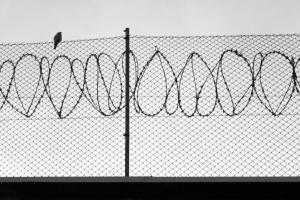Mother’s Day is Another Day to Struggle for Justice When Your Child is Behind Bars
Institute for Policy Studies
 The 1994 crime bill was never mostly about crime. It was designed from the beginning as a political symbol. Back in the 1990s, crime was to Bill Clinton as illegal immigration is to Donald Trump and Ted Cruz today: a way of reassuring fearful, alienated white voters. Like other New Democrats, Clinton had years earlier decided that the party’s best hope to win those voters back into the fold was to align themselves with a more conservative criminal-justice policy.
The 1994 crime bill was never mostly about crime. It was designed from the beginning as a political symbol. Back in the 1990s, crime was to Bill Clinton as illegal immigration is to Donald Trump and Ted Cruz today: a way of reassuring fearful, alienated white voters. Like other New Democrats, Clinton had years earlier decided that the party’s best hope to win those voters back into the fold was to align themselves with a more conservative criminal-justice policy.
 Bringing home 6,000 federal prisoners a few months early and delaying disclosure of criminal records for federal job applicants are both better steps to take than no action at all. It no doubt will have a trickle-down effect to state prisons and state laws where the vast majority of people are suffering unjustly. But is a “trickle-down” effect enough?
Bringing home 6,000 federal prisoners a few months early and delaying disclosure of criminal records for federal job applicants are both better steps to take than no action at all. It no doubt will have a trickle-down effect to state prisons and state laws where the vast majority of people are suffering unjustly. But is a “trickle-down” effect enough?
 The decision to release 6,000 federal prisoners before the end of their sentence is a sign of the failure of the "war on drugs." But it’s no substitute for systemic reforms that cut off the cycle of mass incarceration. Congress still needs to pass comprehensive criminal justice reform," said Michael Collins, policy manager with the Drug Policy Alliance.
The decision to release 6,000 federal prisoners before the end of their sentence is a sign of the failure of the "war on drugs." But it’s no substitute for systemic reforms that cut off the cycle of mass incarceration. Congress still needs to pass comprehensive criminal justice reform," said Michael Collins, policy manager with the Drug Policy Alliance.
 There are 2.4 million people in U.S. jails; and the burden of mass incarceration falls heavily on the many families of inmates who can’t pay off thousands of dollars in debt after paying court-related costs. According to a report published Monday, the average family of an inmate incurs $13,607 in court-related debt, one-third of the families go into debt to pay for phone calls and visits, and 83 percent of the family members responsible for these costs are women.
There are 2.4 million people in U.S. jails; and the burden of mass incarceration falls heavily on the many families of inmates who can’t pay off thousands of dollars in debt after paying court-related costs. According to a report published Monday, the average family of an inmate incurs $13,607 in court-related debt, one-third of the families go into debt to pay for phone calls and visits, and 83 percent of the family members responsible for these costs are women.
 In Chicago, over a 5 year period from 2005-2009, there were: 851 blocks with over $1 million committed to prison sentences; 121 blocks with over $1 million committed to prison sentences for non-violent drug offenses. This is wasteful spending at its worst, especially given that research has shown that incarceration does not necessarily reduce crime in neighborhoods. The good news is that there are many innovative, common-sense, and creative alternative approaches.
In Chicago, over a 5 year period from 2005-2009, there were: 851 blocks with over $1 million committed to prison sentences; 121 blocks with over $1 million committed to prison sentences for non-violent drug offenses. This is wasteful spending at its worst, especially given that research has shown that incarceration does not necessarily reduce crime in neighborhoods. The good news is that there are many innovative, common-sense, and creative alternative approaches.
 In the November, 2014, special issue of Socialism and Democracy, "The Roots of Mass Incarceration in the US: Locking Up Black Dissidents and Punishing the Poor," provides a penetrating analysis of a range of the issues involved and points toward the steps that are needed to turn around these horrors. This publication couldn't be more timely and relevant, as the mighty river of the Black Lives Matter movement flows across and brings new life into the country.
In the November, 2014, special issue of Socialism and Democracy, "The Roots of Mass Incarceration in the US: Locking Up Black Dissidents and Punishing the Poor," provides a penetrating analysis of a range of the issues involved and points toward the steps that are needed to turn around these horrors. This publication couldn't be more timely and relevant, as the mighty river of the Black Lives Matter movement flows across and brings new life into the country.
Spread the word